Weapopnizing Apathy, Pakistan
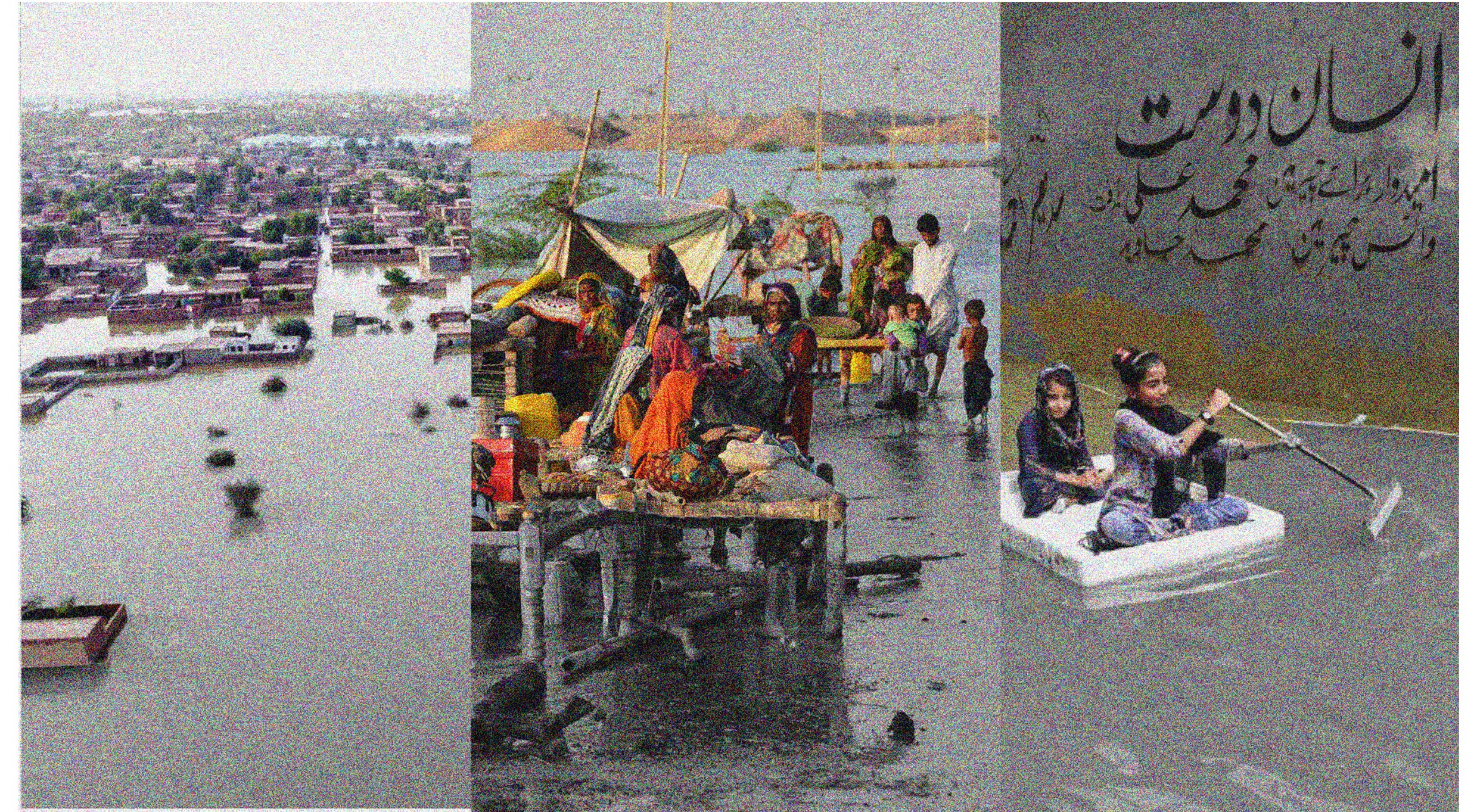 Pakistan Flood
Pakistan Flood
How do we begin to unravel the multiscalar spatial traumas that the global south goes through?
This project aims to understand systems of apathy generated through mistrust and alienation of a community. During the floods that hit Pakistan President Biden stated; “Pakistan is one of the most dangerous nations” in the world with “nuclear weapons without any cohesion”. This statement holds a certain level of irresponsibility towards a nation going through a dire humanitarian crisis which killed 1,739 people, and destroyed 1.7 million homes. These floods stemmed from unprecedented rainfall, which were a direct result of global climate change. Statistically, Pakistan accounts for around 0.6% of the world’s greenhouse gas emissions, even though it makes up nearly 2.7% of the global population. China is the world’s biggest emitter, at 32.5%, and while the US is second, accounting for 12.6%, it has historically been the biggest emitter globally. Yet, the global narrative surrounding these floods was one of indifference built through a vague understanding of isolated media reports.
The damage caused by the floods was estimated to be around 30 Billion dollars by the UN. Can this cost estimation be stated as humanitarian aid? Or should it be claimed as climate reparations to the people of Pakistan. A developing nation subjugated to years of conflict and constructed climate disasters.
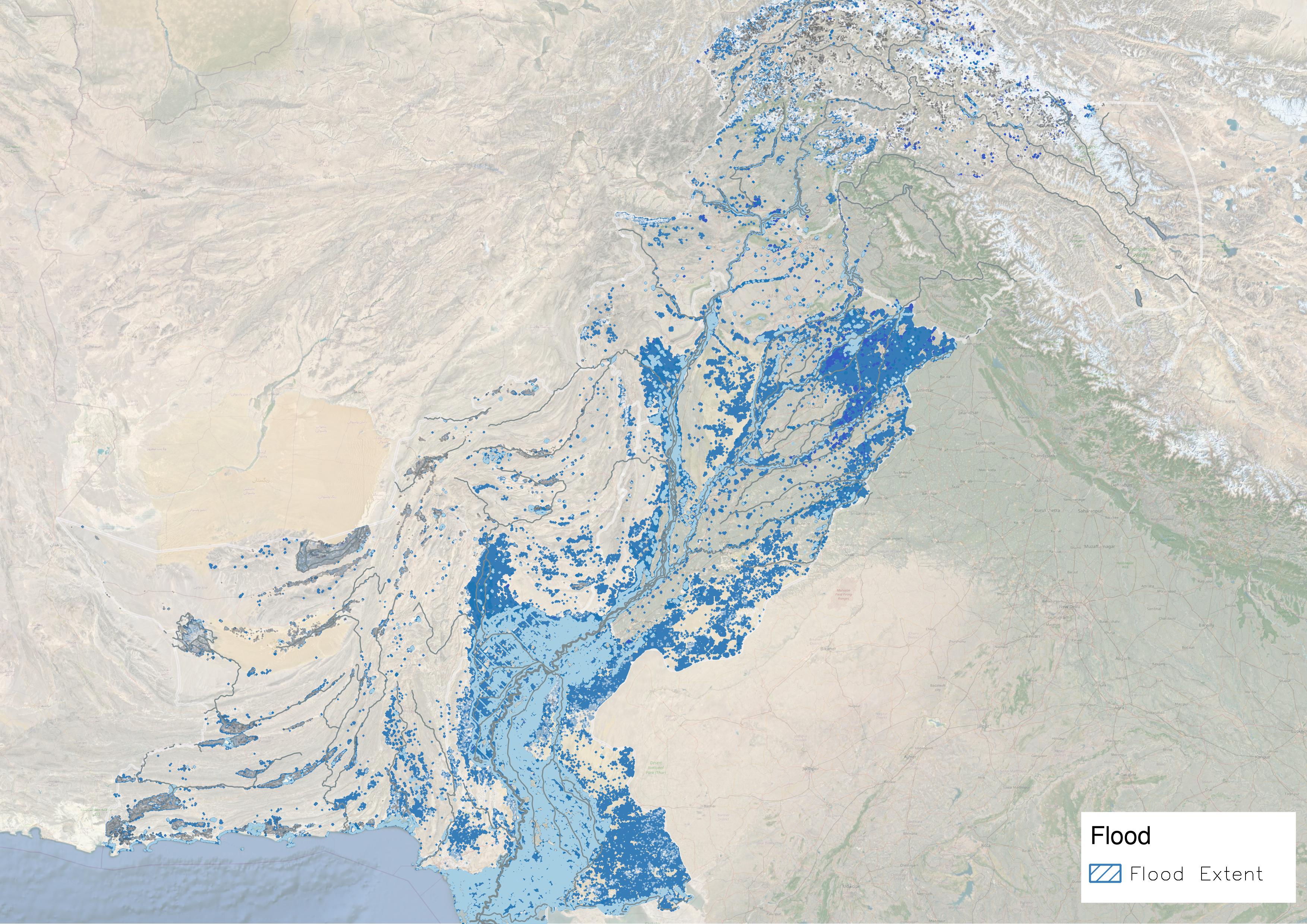 Map of Flood Extent, by Iza Khan
Map of Flood Extent, by Iza Khan
Before the United States military departed from Afghanistan Donal Trump stated in his Presidency the following:
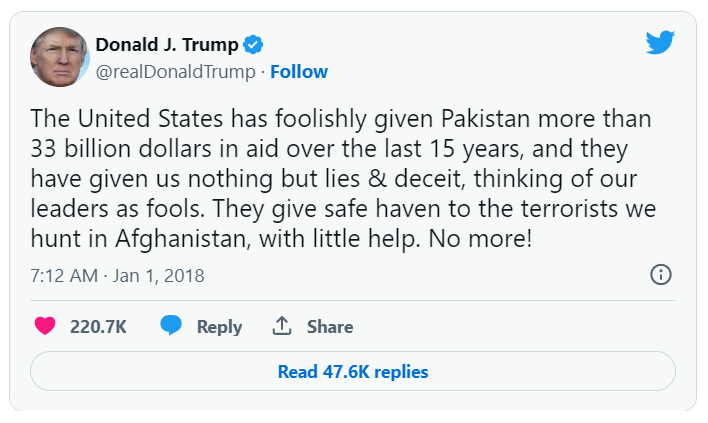 Why Trump cut millions in military aid to Pakistan
Why Trump cut millions in military aid to Pakistan
Aid given to Pakistan has historically been majorly associated with military assistance targeted towards terrorism or conflict oriented operations by using Pakistan as an ally. Pakistan received nearly $2 billion from 1953 to 1961, a quarter of which was military assistance. This assistance continued through the 1980s to counteract the Soviet Union’s occupation of Afghanistan and post 9/11 Pakistan received $7.89 billion from the U.S. as “coalition support funds” intended as reimbursement for Pakistani assistance in the war on terror. These statements are formulated through years of historically misrepresentation of the on ground situation of Pakistan. On June 19, 2004, the United States undertook its first known drone strike in Pakistan, beginning a covert war that would eventually kill thousands of people. This dehumanizing war tactic aided the infringement of human rights.
 From Ground images of Drone remminents
From Ground images of Drone remminents
Drone strikes were an inhumane and inaccurate system of determining who a militant, combatant or terrorist is and this led to thousands of civilian casualties that were never accounted for. The reasons for unaccountability were exacerbated through a collective perception communicated throughout the years by the global media. Where civilian casualties were deemed as a necessary outcome of war.
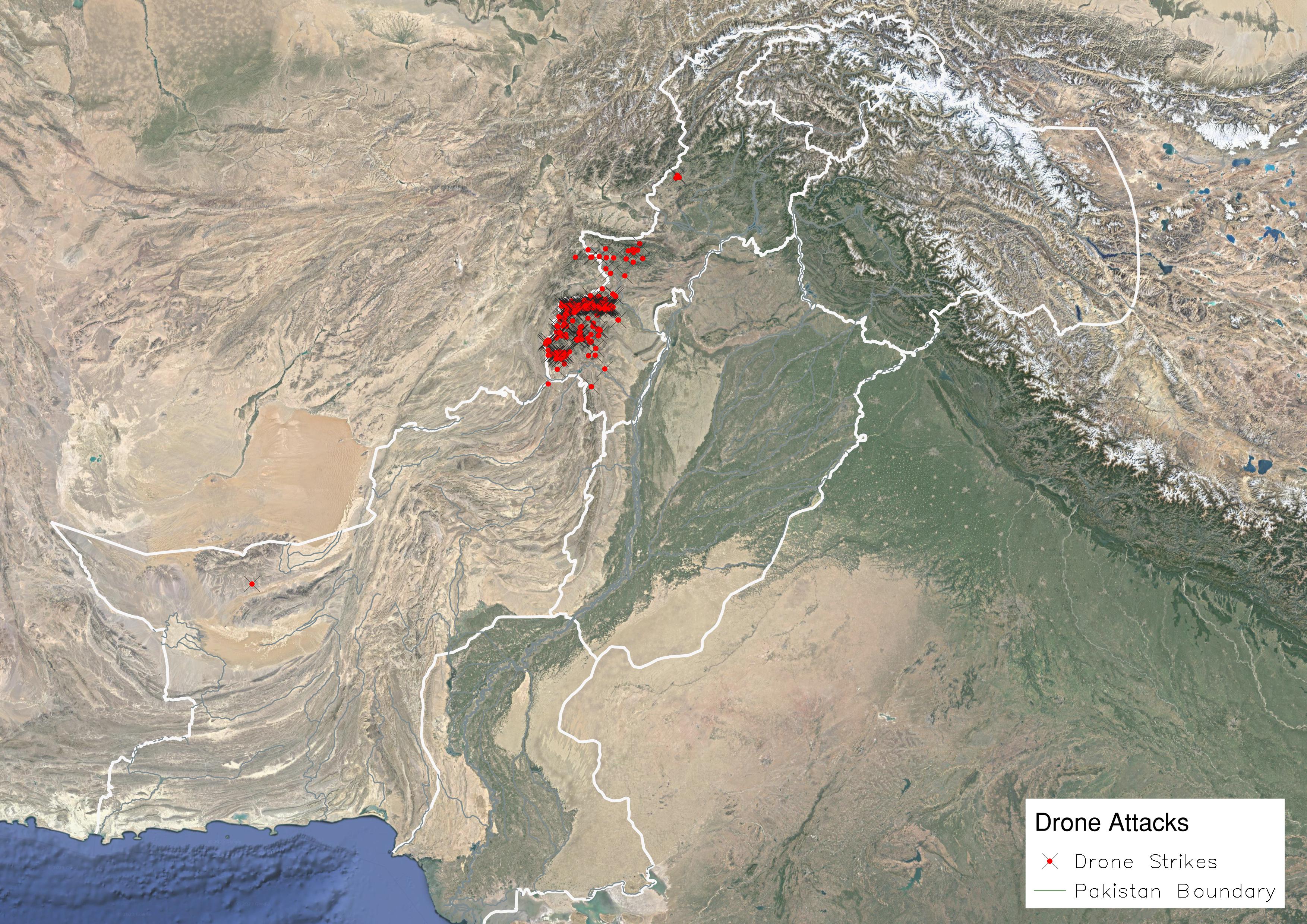 Mostly Situated in Khyber Pakhtunkhwa, Data from the Drone War in Pakistan
Mostly Situated in Khyber Pakhtunkhwa, Data from the Drone War in Pakistan
Along with these Pakistan has also been continuously under insurgent terrorist attacks which saw a rise post 2001. It has been consistently in the top 10 of the countries most impacted by global terrorism.
This particular project builds on two key spatial traumas and overlays the data to find points of global isolation. Specifically, for the two cities who have been living at the frontlines of both these issues.
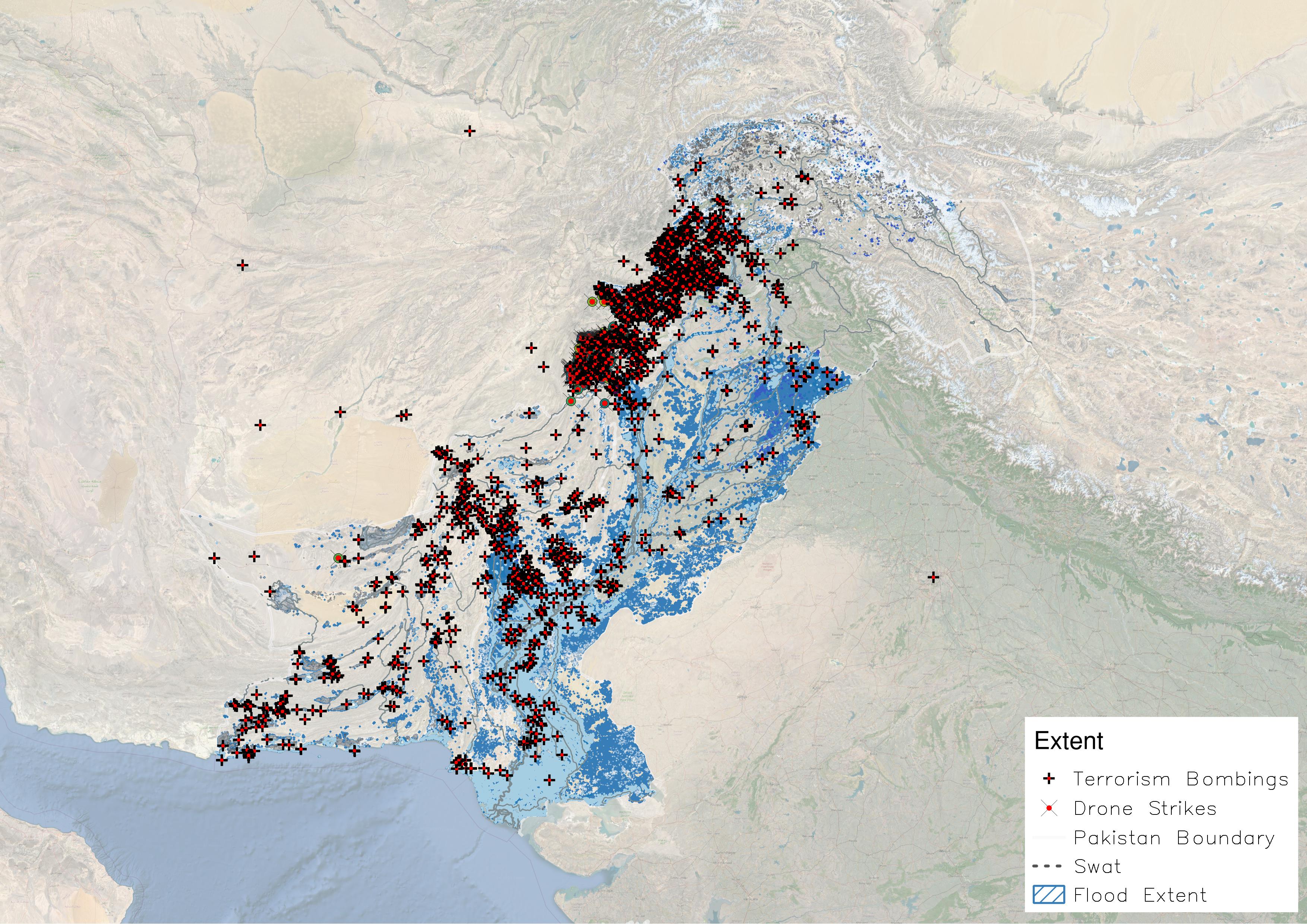 Map by Iza Khan
Map by Iza Khan
Swat District
 Map by Iza Khan
Map by Iza Khan
The Swat valley faced a huge loss in infrastructural damages that included bridges and mosques, the roads between Bahrain and Kalam which was built in 2018 for Rs10 billion cost, were washed away due to the intense floods. Swat has also been on the frontlines of the terrorism conflict throughout the years and is seeing a rise in terrorist activities due to the growing threat of TTP (Tehreek-e-Taliban Pakistan)
Jacoabad
 Map by Iza Khan
Map by Iza Khan
Jacobabad is Pakistan’s hottest cities and during the floods it faced great scales of devastation, more than 156,000 homes were damaged or destroyed three main canals were breached, the flood encompassing the region had left more than 3,700 villages under water. Leaving more than 37,000 of the homeless and camping in 107 temporary sites. Jacobabad has also previously been at loss from terrorist attacks.
CONCLUSION
These methodologies are essential in understanding due reparations to the people of Pakistan. The scars of Western imperialism need to be mapped thoroughly to evaluate the number of people displaced, homes damaged and lives lost. The areas most vulnerable to climate change are the ones most neglected by the global community. They have for years gone through irreversible damages imposed through political conflicts, therefore many of these people have witnessed multiple humanitarian crises in their lifetimes. These communities have faced structured apathy through years of conditioning by the western media. The threat of climate change has also gained equal level of indifference and denial because the incidents of damage seem isolated. The day we start thinking of these communities as equal citizens of the global community, the day we start empathizing with the spatial traumas they face is the day we’ll take the imminent threat of climate change seriously.